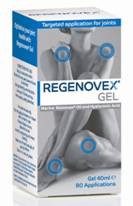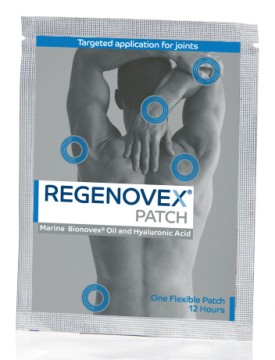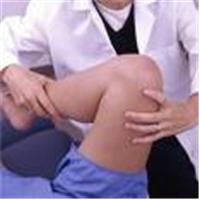
icating.





Boston: Obesity, among other factors, is strongly associated with an increased risk of rapid cartilage loss, according to a study published in the August issue of the magazine Radiology.
“We have isolated demographic and MRI-based risk factors for progressive cartilage loss,” said the study’s lead author, Frank W. Roemer, M.D., adjunct associate professor at Boston University and co-director of the Quantitative Imaging Center at the Department of Radiology at Boston University School of Medicine.
“Increased baseline body mass index (BMI) was the only non-MRI-based predictor identified.”
As obesity is one of the few established risk factors for osteoarthritis, it is not surprising that obesity may also precede and predict rapid cartilage loss. Weight loss is probably the most important factor to slow disease progression.
Risk Factors for MRI-detected Rapid Cartilage Loss of the Tibio-femoral Joint over a 30-month Period: the MOST Study.
Tibio-femoral cartilage is a flexible connective tissue that covers and protects the bones of the knee. Cartilage damage can occur due to excessive wear and tear, injury, misalignment of the joint or other factors, including osteoarthritis.
Osteoarthritis is the most common form of arthritis, affecting 27 million Americans, according to the National Institute of Arthritis and Musculoskeletal and Skin Diseases. In osteoarthritis, the cartilage breaks down and, in severe cases, can completely wear away, leaving the joint without a cushion. The bones rub together, causing further damage, significant pain and loss of mobility.
The best way to prevent or slow cartilage loss and subsequent disability is to identify risk factors early.
“Osteoarthritis is a slowly progressive disorder, but a minority of patients with hardly any osteoarthritis at first diagnosis exhibit fast disease progression,”
Dr. Roemer said. “So we set out to identify baseline risk factors that might predict rapid cartilage loss in patients with early knee osteoarthritis or at high risk for the disease.”
The researchers recruited patients from the Multicenter Osteoarthritis (MOST) Study, a prospective study of 3,026 people, age 50 – 79, at risk for osteoarthritis or with early x-ray evidence of the disease. The study is funded by the National Institute on Aging.
Dr. Roemer’s study consisted of 347 knees in 336 patients. The patient group was comprised of 65.2 percent women, mean age 61.2, with a mean BMI of 29.5, which is classified as overweight. Recommended BMI typically ranges from 18.5 to 25. Only knees with minimal or no baseline cartilage damage were included. Of 347 knees selected for the study, 20.2 percent exhibited slow cartilage loss over the 30-month follow-up period and 5.8 percent showed rapid cartilage loss. Rapid cartilage loss was defined by a whole organ magnetic imaging score of at least 5, indicating a large full thickness loss of 75 percent in any subregion of the knee during the follow-up period.
The results showed that the top risk factors contributing to rapid cartilage loss were baseline cartilage damage, high BMI, tears or other injury to the meniscus (the cartilage cushion at the knee joint) and severe lesions seen on MRI at the initial exam. Other predictors were synovitis (inflammation of the membrane that lines the joints) and effusion (abnormal build-up of joint fluid).
Excess weight was significantly associated with an increased risk of rapid cartilage loss. For a one-unit increase in BMI, the odds of rapid cartilage loss increased by 11 percent. No other demographic factors–including age, sex and ethnicity–were associated with rapid cartilage loss.
“As obesity is one of the few established risk factors for osteoarthritis, it is not surprising that obesity may also precede and predict rapid cartilage loss,” Dr. Roemer said. “Weight loss is probably the most important factor to slow disease progression.”
AT A GLANCE
* Researchers using MRI have identified risk factors for rapid cartilage loss in the knee.
* People with a high body mass index (BMI) may be at increased risk for rapid cartilage loss and osteoarthritis.
* Osteoarthritis affects 27 million Americans.
“Risk Factors for MRI-detected Rapid Cartilage Loss of the Tibio-femoral Joint over a 30-month Period: the MOST Study.” Collaborating with Dr. Roemer were Yuqing Zhang, D.Sc., Jingbo Niu, M.D., John A. Lynch, Ph.D., Michel D. Crema, M.D., Monica D. Marra, M.D., Michael C. Nevitt, Ph.D., David T. Felson, M.D., M.P.H., Laura Hughes, Georges El-Khoury, M.D., Martin Englund, M.D., Ph.D., and Ali Guermazi, M.D., for MOST study investigators.
Radiology is edited by Herbert Y. Kressel, M.D., Harvard Medical School, Boston, Mass., and owned and published by the Radiological Society of North America, Inc. (http://radiology.rsnajnls.org/)
RSNA is an association of more than 43,000 radiologists, radiation oncologists, medical physicists and related scientists committed to excellence in patient care through education and research. www.RSNA.org
For patient-friendly information on MRI, visit www.RadiologyInfo.org
London: Stem cells have been used to grow cartilage in a breakthrough that could eventually mean fewer patients need hip and knee replacements.
Scientists from Imperial College London have used stem cells from embryos to make new cartilage that can be injected into damaged joints. The development may mean that the technology can be used for patients with sports injuries and age-related disasters such as osteoarthritis.
Cartilage is a smooth, flexible layer of tissue that sits between the bones in the body’s major joints. Its job is to act as a shock absorber, protecting the joints against impact damage and from wear and tear.
The Imperial College scientists combinedthe stem cells with a few cartilage cells extracted from healthy joints. Although the technique has yet to be used in humans, the team behind the research is confident it has major advantages over existing cartilage production methods.